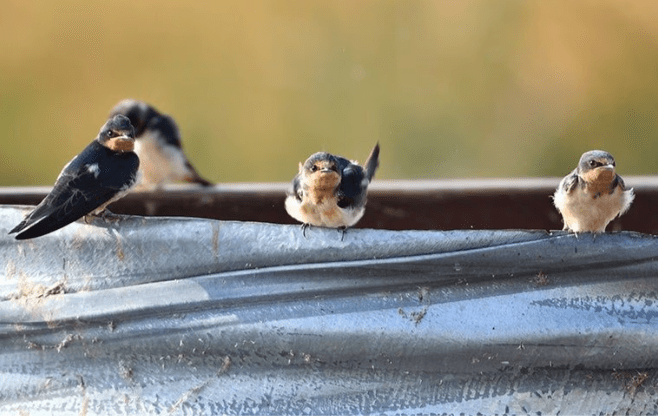
Chimney Swifts
Chimney Swifts

About Chimney Swifts In Houston, Dallas/Fort Worth, TX & Surrounding Areas
When the home life of chimney swifts is understood, most Houston, Dallas/Fort Worth, TX and surrounding areas homeowners welcome alternatives to destroying or disturbing families of nesting swifts.
Some basic information about swifts:
- Chimney Swifts migrate to North America from Peru in the spring and are protected by federal law under the Migratory Bird Treaty Act. It is illegal to remove or disturb Chimney Swifts, their nests, eggs or young during the breeding season.
- Unlike most birds, Chimney Swifts are unable to perch or stand upright and must have chimneys or similar structures in which to roost and raise their families.
- The loud noises are made by baby swifts when they beg for food from their parents. The young leave the chimney for their first flight 30 days after the eggs hatch. The babies make the most noise during their last two weeks in the chimney. By the time most homeowners become aware of the loud chattering, they only need to wait two weeks until their chimney will be quiet again. To lessen the noise, a blanket or towels can be stuffed in the fireplace.
- Their nests are small and pose no safety or health hazards when the chimney is properly maintained.
- Chimney Swifts eat and feed their young thousands of flying insect pests.
- Chimney Swifts are in North America only during the warmest part of the year and migrate back to South America in the fall.
- Once people understand that it is normal for swifts to be in their chimneys, that their presence is only seasonal, and that the loud sounds are the feeding calls of baby birds, most will be satisfied to let the swifts stay at least through the season.
- If birds are found in the fireplace below the damper, those which are fully-feathered with eyes wide open should be placed on the wall above the damper and allowed to climb back up into the chimney. If younger or injured birds are found below the damper, local wildlife authorities should be contacted. Close the damper or otherwise seal the bottom of the flue, leaving the top open for the birds. Pack the area below the damper and the fireplace with insulation to dampen the sound made by the birds. Reschedule any cleaning for a later date: at least 6 weeks for chimneys with eggs, and at least 4 weeks for chimneys with young. Late fall after the swifts have migrated south for the winter is preferable. At the time of the actual cleaning, schedule another cleaning for the following spring before the swifts return.
- The conservation of Chimney Swifts need not interfere with the business of professional chimney sweeping. In fact, those companies which respect wildlife laws and practice humane alternatives to bird removal will be more likely to appeal to a wider range of clients in an atmosphere of increasing environmental awareness.
Recent Blog Articles
Our Tips & Tricks
-
 How To Stop Birds From Entering Your House This WinterRead More
How To Stop Birds From Entering Your House This WinterRead More -
 How to Winterize Your Texas Home and Prevent PestsRead More
How to Winterize Your Texas Home and Prevent PestsRead More -
 How to Identify Wildlife Presence in Your HomeRead More
How to Identify Wildlife Presence in Your HomeRead More -
 Why Rodent Sightings Always Go Up During the WinterRead More
Why Rodent Sightings Always Go Up During the WinterRead More -
 How Local Wildlife Reacts During Houston & DFW HeatwavesRead More
How Local Wildlife Reacts During Houston & DFW HeatwavesRead More -
 The Importance of Humane Wildlife ControlRead More
The Importance of Humane Wildlife ControlRead More -
 Summer Wildlife Problems In TexasRead More
Summer Wildlife Problems In TexasRead More -
 Who Do I Call to Get Wildlife Out of My Home?Read More
Who Do I Call to Get Wildlife Out of My Home?Read More

.2510130826253.jpg)












